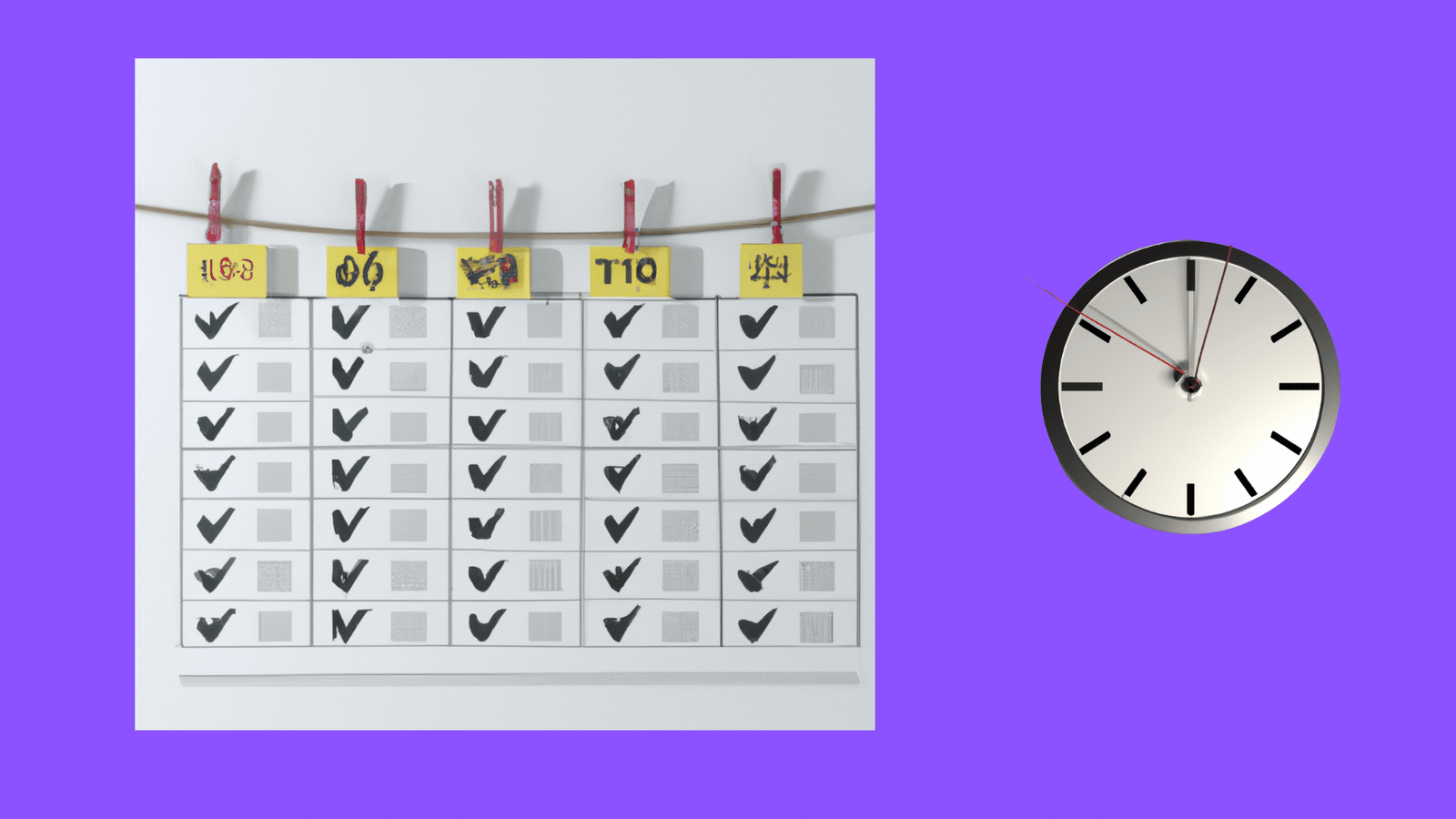The One-Hour Rule
The One-Hour Rule is a simple yet transformative concept designed to maximize productivity and personal development, particularly for high achievers. In an era characterized by incessant distractions and the demands of professional life, dedicating a focused hour each day can facilitate significant progress on personal projects, skill development, or other pursuits that are crucial for growth and success. This approach emphasizes the necessity of carving out uninterrupted time to engage in activities that foster breakthroughs.
The significance of the One-Hour Rule becomes evident when considering the fast-paced nature of contemporary living. High achievers often find themselves inundated with responsibilities, making it increasingly challenging to focus on developmental goals. By committing to just one hour each day, individuals can channel their energy into meaningful endeavors without feeling overwhelmed. This not only aids in enhancing productivity but also ensures that personal growth receives the attention it deserves amidst a busy schedule.
Moreover, the impact of this rule extends far beyond mere time management. Engaging in dedicated, focused work enables individuals to cultivate deeper skills and insights, which can drastically improve overall effectiveness in both personal and professional spheres. The One-Hour Rule creates a structured environment to practice new skills and ideas, fostering creativity and innovation. As a result, it empowers high achievers to consistently push their boundaries, leading to sustained progress over time.
Incorporating the One-Hour Rule into daily routines is particularly relevant for those seeking to elevate their performance and capabilities. By understanding its principles and committing to this practice, individuals can unlock the potential for daily breakthroughs, ultimately transforming their approach to productivity and achievement.
The Psychology Behind the One-Hour Rule
The One-Hour Rule is not merely a time management strategy; it is deeply rooted in psychological principles that significantly enhance productivity and achievement. One of the foundational theories that underpin the effectiveness of this rule is the concept of motivation. According to the Self-Determination Theory, individuals are driven by intrinsic motivators such as autonomy, competence, and relatedness. By allocating a dedicated hour for a particular task, individuals cultivate a sense of control over their time, which in turn boosts their intrinsic motivation. This sense of autonomy is crucial for long-term engagement and success in goal achievement.
Furthermore, the One-Hour Rule positively impacts focus. The Pomodoro Technique, for instance, emphasizes the importance of short, focused work sessions followed by breaks. By consciously setting aside an uninterrupted hour, one creates an environment conducive to deep work, allowing for heightened focus and reduced distractions. This is especially significant in today’s fast-paced world, where the fragmented attention spans can detrimentally affect productivity. The structured time frame of one hour not only helps in minimizing procrastination but also facilitates the complete immersion necessary for accomplishing complex tasks.
Habit formation also plays a critical role in the efficacy of the One-Hour Rule. The Habit Loop, consisting of cue, routine, and reward, suggests that consistent practice can lead to automaticity in behavior. Dedicating one hour daily for important tasks can trigger a cue, fostering a habitual response. Over time, as this practice becomes ingrained, individuals may find themselves approaching such tasks with increased efficiency and a stronger positive mindset. Consequently, the One-Hour Rule cultivates momentum, gradually transforming efforts into habitual actions that bring individuals closer to their goals.
Identifying Your Breakthrough Goals
To effectively employ the One-Hour Rule, it is essential for individuals to identify breakthrough goals that merit focus during their dedicated hour of productivity. Breakthrough goals are the ambitions that catalyze significant changes, whether personal or professional, and contribute substantially to growth and success. A strategic approach to setting these goals involves employing the SMART criteria—Specific, Measurable, Achievable, Relevant, and Time-bound—ensuring clarity and purpose in your efforts.
The first step in identifying a breakthrough goal is to establish specificity. Rather than aiming for vague aspirations like “I want to be healthier,” refine this to “I will exercise for 30 minutes every day.” This clarity not only defines the goal but also sets a clear direction for your actions. Next, ensuring that the goal is measurable allows for tracking progress effectively. In our example, tracking workouts can be done using journals or apps, enabling individuals to visualize their achievements and stay motivated.
Additionally, the goal must be achievable. It is vital to assess one’s current resources, skills, and circumstances while setting goals. Unrealistic ambitions can lead to frustration and burnout, thereby hindering progress. Consider setting a goal that stretches abilities while remaining within the realm of possibility. Relevant goals align with personal values and the larger objectives of one’s career or life. This ensures that the time and energy invested yield meaningful outcomes.
Lastly, incorporating a time-bound element instills a sense of urgency, making it more likely that the individual will adhere to their plan. By defining deadlines, commitment increases, as does accountability. In summary, identifying breakthrough goals through the SMART framework provides a structured pathway to prioritize efforts effectively and elevate personal performance within the One-Hour Rule framework.
Creating Your Optimal One-Hour Routine
To harness the potential of the One-Hour Rule effectively, it is crucial to structure this hour thoughtfully. First, identifying the optimal time of day to engage in this focused practice can significantly impact productivity. Many individuals find that early morning hours provide a serene environment, devoid of external interruptions. During this time, mental clarity tends to be at its peak, making it an ideal period to dedicate to high-priority tasks. Alternatively, others may experience heightened creativity and concentration in the late evening. It is essential to assess your personal energy patterns to determine when you are most productive and aligned with your biological clock.
Equally important is the need to eliminate distractions during this hour. It is advisable to create a conducive environment for concentration. This can involve minimizing visual distractions by establishing a dedicated workspace that is free from clutter and unrelated stimuli. Additionally, consider silencing notifications on electronic devices and using apps or tools designed to block distracting websites. Informing others of your focused hour can further prevent interruptions, ensuring uninterrupted time to engage fully in the task at hand.
Creating a routine that aligns with individual energy levels is paramount. This can include incorporating warm-up exercises, such as deep breathing or light stretching, to prime the mind for focused work. Furthermore, breaking the hour into segments can enhance productivity. For example, applying the Pomodoro Technique, where 25 minutes of focused work is followed by a short break, may increase focus and retention while minimizing fatigue. Experimenting with these various methods allows for the discovery of the ideal combination that suits personal working styles. Thus, tailoring your One-Hour Rule not only fosters daily breakthroughs but also cultivates a sustainable routine that aligns with your specific productivity patterns.
Tools and Techniques for Maximum Productivity
In the pursuit of enhanced productivity, especially when adhering to the One-Hour Rule, various tools and techniques can significantly aid individuals in achieving their daily goals. One widely recognized method is the Pomodoro Technique, which involves breaking down work periods into intervals, traditionally 25 minutes in length, followed by short breaks. This technique not only helps in maintaining focus but also combats fatigue, allowing for sustained productivity during the dedicated hour.
Another effective strategy is prioritization using the Eisenhower Matrix. This technique categorizes tasks into four quadrants based on urgency and importance, helping individuals to focus on what truly matters. By identifying high-priority tasks, one can make the most of the One-Hour Rule, ensuring that essential duties are completed first. Implementing such prioritization can lead to more structured and efficient time management.
Furthermore, digital tools designed for task management can greatly enhance productivity. Applications like Todoist or Trello allow users to organize tasks visually and set deadlines, making it easier to monitor progress. These tools often incorporate features that enable users to break tasks into manageable segments, aligning perfectly with the One-Hour Rule’s emphasis on focused work.
Real-world examples demonstrate the effectiveness of these techniques. Successful entrepreneurs, such as Tim Ferriss, advocate for time-blocking strategies, which resonate well with the One-Hour Rule. By strictly allocating specific hours to different tasks, they maximize productivity and ensure that critical work receives the required attention. Likewise, many high-achievers employ focus-enhancing apps like Forest, which minimizes distractions by gamifying the experience of staying focused.
Integrating these tools and techniques into daily routines can lead to remarkable improvements in productivity. By approaching tasks strategically, individuals can harness the full potential of the One-Hour Rule, making each hour a stepping stone towards substantial breakthroughs.
Overcoming Common Challenges
Implementing the One-Hour Rule can bring significant benefits to high achievers, but several common challenges often hinder its effective adoption. Among these obstacles, procrastination frequently emerges as a primary barrier. Procrastination can stem from feelings of dissatisfaction or the overwhelming nature of tasks. To combat this, individuals are encouraged to break larger projects into smaller, manageable tasks. By setting short-term goals, high achievers can minimize the intimidation factor of extensive projects and create a sense of accomplishment that fuels motivation.
Lack of focus also poses a challenge during the one-hour time allocation. The digital age presents a constant barrage of distractions, including notifications from smartphones and the temptation of social media. To enhance concentration, high achievers can employ techniques such as the Pomodoro Technique, which involves working diligently for a set period followed by short breaks. Additionally, creating a dedicated workspace that is free from distractions can foster an environment conducive to focus. Eliminating external disturbances can significantly bolster one’s ability to stick to the One-Hour Rule, ensuring that the hour is productive and meaningful.
Feeling overwhelmed is another challenge many face when attempting to adhere to the One-Hour Rule. High achievers often juggle numerous responsibilities, leading to stress and anxiety over task completion. Mindset shifts can be particularly beneficial in these situations. Acknowledging that perfection is not always attainable can help in reducing pressure. Instead, embracing the idea of “progress over perfection” encourages individuals to celebrate incremental improvements. Additionally, practicing mindfulness techniques, such as meditation or deep breathing, can aid in calming the mind and reducing feelings of being overwhelmed. Together, these strategies can empower high achievers to navigate the obstacles they encounter while implementing the One-Hour Rule successfully.
Case Studies: Success Stories of the One-Hour Rule
The One-Hour Rule has proven to be a transformative method for many high achievers across various fields. One notable example is that of John, a software developer who struggled with procrastination and a lack of focus. By dedicating just one hour a day to deep work, he was able to complete an unfinished project that had been lingering for months. This significant breakthrough not only enhanced his productivity but also led to a promotion, underscoring the impact of structured time management.
Another impressive case is Sarah, an entrepreneur who implemented the One-Hour Rule to address her growing to-do list. By committing one hour each morning specifically for strategic planning and execution, she streamlined her business operations. This focused approach allowed her to prioritize tasks effectively, resulting in a 40% increase in her company’s revenue within just six months. Sarah’s story exemplifies how the One-Hour Rule can lead to tangible business improvements when applied consistently.
Furthermore, a group of university students applied the One-Hour Rule during their exam preparation period. They collectively designated an hour each day for intensive study sessions, leading to remarkable academic improvements. One participant, Rachel, improved her grades from average to the top of her class within a single semester. The key takeaway from these students’ experiences is the power of collaboration and accountability when utilizing the One-Hour Rule.
Each of these success stories highlights a fundamental aspect of the One-Hour Rule: the ability to create focused time for significant tasks. By recognizing the value of dedicated, uninterrupted time, individuals can unlock their potential and achieve transformative results in their personal and professional lives. The common thread among these case studies is the disciplined application of time management, which acts as a catalyst for their respective breakthroughs.
Adapting the One-Hour Rule to Your Life
Implementing the One-Hour Rule effectively necessitates personal adaptation to ensure it resonates with your individual lifestyle, career demands, and personal objectives. Start by evaluating your daily schedule and identifying time slots where you can consistently allocate an hour. Some may find that early mornings are optimal, while others might prefer late evenings or lunch breaks. The key is to select a time that minimizes distractions and maximizes focus.
Next, consider your specific goals. The One-Hour Rule can be tailored to fit various objectives, whether they are related to professional development, personal projects, or health pursuits. For instance, if you’re focused on career growth, dedicating an hour to skill enhancement or studying industry-related material can yield significant benefits. Alternatively, if wellness is your priority, use this hour for physical exercise or mindfulness practices. This customization allows you to align the One-Hour Rule with what matters most to you, ultimately reinforcing your commitment to progress.
Flexibility is another crucial component. Life’s unpredictability may disrupt your planned one-hour sessions at times. Rather than abandoning the practice entirely, adapt by shifting the time or context of your session. If one day you find it impossible to maintain your hour-long focus, consider breaking it into smaller blocks of time throughout the day. This approach ensures that you remain engaged with your goals, even when circumstances change.
Finally, reflect on your progress regularly. Assess what strategies are working, and be open to adjusting your methods as necessary. The One-Hour Rule is a dynamic framework that should evolve as you gain insights into what best drives your success. By personalizing this rule to fit your unique situation, you cultivate a sustainable practice that fosters continuous improvement and meaningful breakthroughs.
Call to Action
In summary, the One-Hour Rule presents a transformative approach for high achievers seeking to maximize their daily productivity and make significant breakthroughs. This simple yet effective method emphasizes the importance of dedicating one hour each day to focused, purposeful work on specific goals. Throughout this blog post, we explored how this practice not only enhances clarity and minimizes distractions but also fosters a sense of accomplishment and drives personal growth.
By implementing the One-Hour Rule consistently, individuals can create a structured framework that encourages intention and accountability. The strategies highlighted—from establishing a conducive environment to setting realistic goals—are designed to facilitate progress and ensure that this hour becomes a productive cornerstone of one’s day. Moreover, the benefits are compounded when reflection and evaluation are integrated into the practice, enabling individuals to track their progress and adjust their strategies as needed.
As you reflect on the potential changes that the One-Hour Rule could bring to your life, consider taking the next decisive step. Start by setting aside one hour each day, free from interruptions, to concentrate on the projects and aspirations that matter most to you. Whether it’s writing a book, developing a new skill, or advancing a professional goal, dedicating this time will empower you to achieve and surpass your objectives.
Embrace this opportunity to transform your daily routine. Commit to the One-Hour Rule and watch how it can open doors to new possibilities, fueling your journey toward success and fulfillment. Take action today and make this pivotal habit a part of your life. Your future self will thank you.









